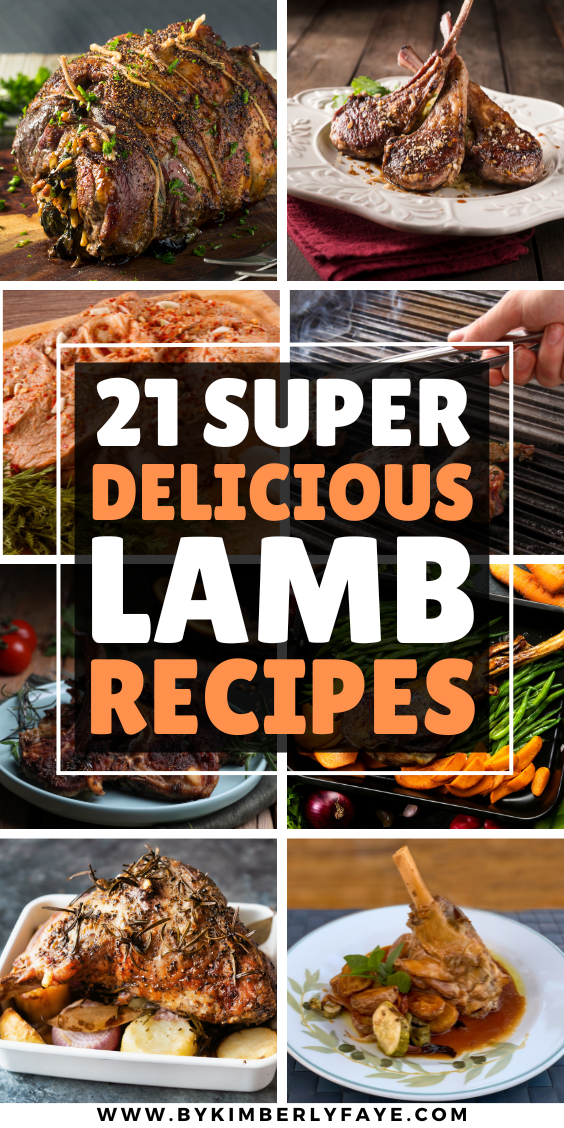21+ Beginner-Friendly SEO Tips to Grow Your Blog
This site contains affiliate links. I may earn a small commission, at no extra cost to you.
Blogging is a great way to share your ideas, connect with others, and even make money. However, with so many blogs out there, it can be tough to stand out from the crowd. That’s where search engine optimization (SEO) comes in. By optimizing your blog for search engines, you can increase your visibility and attract more readers.
If you’re new to blogging and SEO, don’t worry. There are plenty of simple tips and tricks you can use to improve your blog’s search engine ranking. In this article, we’ll share 21+ SEO tips to help you grow your blog as a beginner. From keyword research to link building, we’ll cover everything you need to know to get started. So, whether you’re blogging for fun or profit, read on to learn how to make your blog stand out in the crowded blogosphere.

Understanding SEO Fundamentals
What Is SEO?
SEO stands for Search Engine Optimization. It is the process of optimizing your website or blog to rank higher in search engine results pages (SERPs) for specific keywords and phrases. The goal of SEO is to increase the visibility and traffic to your website, which can ultimately lead to more conversions and revenue.

Importance of SEO for Blogs
SEO is crucial for any blog or website looking to grow their audience and increase their online presence. By optimizing your blog for search engines, you can attract more organic traffic, which is traffic that comes from search engines like Google, Bing, and Yahoo. This can lead to more clicks, more shares, and ultimately more revenue.
Here are a few reasons why SEO is important for blogs:
- Increased visibility: By optimizing your blog for search engines, you can increase your visibility in search engine results pages, which can lead to more clicks and traffic to your website.
- More traffic: SEO can help you attract more organic traffic to your blog, which can lead to more pageviews, more engagement, and ultimately more revenue.
- Better user experience: By optimizing your blog for search engines, you can also improve the user experience for your readers. This includes making your website faster, easier to navigate, and more user-friendly.
Overall, SEO is a crucial part of growing your blog as a beginner. By understanding the fundamentals of SEO, you can improve your website’s visibility, attract more traffic, and ultimately grow your audience and revenue.

Setting Up Your Blog for SEO Success
As a beginner blogger, setting up your blog for SEO success is crucial to increase your visibility and attract more traffic to your website. Here are some tips to help you get started:

Choosing the Right Platform
Choosing the right platform is the first step in setting up your blog for SEO success. WordPress is a popular choice among bloggers because of its SEO-friendly features. It allows you to customize your permalinks, meta tags, and titles, which are important for optimizing your blog for search engines. Other platforms like Wix and Squarespace also offer SEO features, but they may not be as robust as WordPress.

Blog Structure and Design
The structure and design of your blog also play a significant role in your SEO success. Here are some tips to keep in mind:
- Use a responsive design: A responsive design ensures that your blog is optimized for all devices, including desktops, tablets, and smartphones. This is important because Google considers mobile-friendliness as a ranking factor.
- Have a clear and concise navigation: Your blog’s navigation should be easy to use and understand. A clear navigation structure helps search engines crawl your site and understand its content.
- Use header tags: Header tags (H1, H2, H3, etc.) help organize your content and make it easier for search engines to understand your blog’s structure.
- Optimize your images: Images are an essential part of your blog’s design, but they can also slow down your site if they’re not optimized. Make sure to compress your images and use descriptive alt tags to help search engines understand what your images are about.
By following these tips, you can set up your blog for SEO success and attract more traffic to your site. Remember to focus on creating high-quality content that provides value to your readers, and the SEO success will follow.

Keyword Research Strategies
As a beginner blogger, it is crucial to understand the importance of keyword research in optimizing your blog posts for SEO. Keyword research helps you to identify the words and phrases that people use when searching for information related to your blog niche. This section will cover some essential keyword research strategies that can help you grow your blog.

Understanding Keyword Intent
Before you start your keyword research, it is essential to understand the intent behind the keywords you are targeting. There are three types of keyword intent: informational, navigational, and transactional.
- Informational intent keywords are used when someone is looking for information on a particular topic. These keywords usually start with “how to,” “what is,” or “why.”
- Navigational intent keywords are used when someone is looking for a specific website or page. These keywords usually include a brand or domain name.
- Transactional intent keywords are used when someone is ready to make a purchase or take an action. These keywords usually include words like “buy,” “order,” or “subscribe.”
Understanding the intent behind your targeted keywords will help you create content that matches the searcher’s needs and expectations.

Tools for Keyword Research
There are many tools available that can help you with your keyword research. Here are some of the popular ones:
- Google Keyword Planner: This is a free tool provided by Google that helps you find keywords related to your niche and provides data on search volume and competition.
- SEMrush: This is a paid tool that provides in-depth keyword research, competitor analysis, and other SEO metrics.
- Ahrefs: This is another paid tool that provides keyword research, backlink analysis, and other SEO metrics.
When using these tools, focus on finding long-tail keywords that have low competition and high search volume. Long-tail keywords are more specific and targeted, which can help you rank higher in search results.
In conclusion, keyword research is an essential part of optimizing your blog posts for SEO. By understanding keyword intent and using the right tools, you can find the best keywords to target and create content that matches the searcher’s needs.

Creating SEO-Friendly Content
Creating SEO-friendly content is crucial for improving your blog’s visibility on search engines. Here are some tips to help you optimize your content for SEO.

Writing Engaging Headlines
Your headline is the first thing that readers see when they come across your blog post. It should be engaging and accurately reflect the content of the post. Here are some tips for writing engaging headlines:
- Keep it short and sweet: Your headline should be no more than 60 characters long.
- Use keywords: Include relevant keywords in your headline to help search engines understand what your post is about.
- Make it interesting: Use power words and emotional triggers to make your headline more compelling.
- Be specific: Use numbers and specifics to make your headline more informative.

Optimizing Blog Post Structure
The structure of your blog post is also important for SEO. Here are some tips for optimizing your blog post structure:
- Use subheadings: Use H2 and H3 tags to break up your content into sections and make it easier to read.
- Use bullet points and numbered lists: Use bullet points and numbered lists to make your content more scannable and easier to read.
- Use internal linking: Link to other relevant posts on your blog to help search engines understand the context of your content.
- Use images: Use relevant images to break up your content and make it more visually appealing.
By following these tips, you can create SEO-friendly content that will help your blog rank higher on search engines and attract more readers.

On-Page SEO Techniques
When it comes to optimizing your blog for search engines, on-page SEO techniques play a crucial role. On-page SEO refers to the optimization of individual web pages to rank higher and earn more relevant traffic in search engines. Here are some on-page SEO techniques that can help you grow your blog as a beginner:

Meta Tags and Descriptions
Meta tags and descriptions are HTML elements that provide information about your web page to search engines and users. They help search engines understand what your page is about and provide users with a brief summary of your content. Here are some tips for optimizing your meta tags and descriptions:
- Use unique and descriptive titles that accurately reflect the content of your page.
- Keep your titles under 60 characters to avoid truncation in search results.
- Write compelling meta descriptions that include relevant keywords and a call-to-action to encourage clicks.
- Keep your meta descriptions under 155 characters to avoid truncation in search results.

Using Internal and External Links
Internal and external links are important for on-page SEO because they help search engines understand the structure of your website and the relationships between pages. Here are some tips for using internal and external links effectively:
- Use descriptive anchor text that accurately reflects the content of the linked page.
- Link to relevant pages within your own website to help search engines understand the structure of your website and the relationships between pages.
- Link to high-quality external websites that provide additional value to your readers.
- Avoid using too many internal or external links on a single page, as this can dilute the relevance of your content and confuse search engines.
By implementing these on-page SEO techniques, you can improve the visibility of your blog in search engines and attract more relevant traffic to your website.

Technical SEO for Beginners
When it comes to SEO, there are two main categories: on-page and off-page. Technical SEO falls under the on-page category and refers to the optimization of the technical aspects of a website to improve its visibility in search engines. Here are some tips for beginners to improve their technical SEO.

Mobile Optimization
With the majority of internet users accessing websites from their mobile devices, it’s crucial to ensure that your website is optimized for mobile. This includes using a responsive design that adjusts to different screen sizes, optimizing images and videos for faster loading times, and ensuring that your website’s content is easily accessible on mobile devices.

Site Speed and Performance
Site speed and performance are important factors in both user experience and SEO. A slow-loading website can lead to a high bounce rate, which can negatively impact your search engine rankings. To improve site speed and performance, consider compressing images, minifying CSS and JavaScript files, and using a content delivery network (CDN) to serve your website’s content from servers closer to your visitors.
By implementing these technical SEO tips, beginners can improve their website’s visibility in search engines and provide a better user experience for their visitors.

Off-Page SEO Tactics
Off-page SEO is all about the actions taken outside of your blog to improve its search engine ranking. Here are some off-page SEO tactics that can help you grow your blog as a beginner:

Building Backlinks
Backlinks are links from other websites that point to your blog. They are an important factor in SEO because search engines consider them as a vote of confidence in your content. Here are some ways to build backlinks:
- Guest posting: Write high-quality content for other blogs in your niche and include a link back to your blog.
- Broken link building: Find broken links on other blogs and offer to replace them with a link to your content.
- Commenting: Leave thoughtful comments on other blogs in your niche and include a link back to your blog.

Social Media Integration
Social media can be a powerful tool for off-page SEO. Here are some ways to integrate social media into your SEO strategy:
- Share your blog posts on social media platforms like Twitter, Facebook, and LinkedIn.
- Build a following on social media and engage with your followers regularly.
- Use social media to build relationships with other bloggers in your niche.
By implementing these off-page SEO tactics, you can improve your blog’s search engine ranking and grow your audience as a beginner blogger. Remember to focus on creating high-quality content that provides value to your readers, and the rest will follow.

Monitoring and Improving Your SEO
As a beginner blogger, monitoring and improving your SEO is vital to the success of your blog. Here are a few tips to help you get started:

Using Analytics Tools
One of the first things you should do is set up an analytics tool like Google Analytics. This will allow you to track your blog’s traffic and see which pages are performing well and which ones need improvement. You can also use tools like SEMrush or Ahrefs to analyze your competition and see how you can improve your own SEO strategy.

SEO Audits and Adjustments
Performing regular SEO audits can help you identify areas where you can improve your blog’s SEO. This includes analyzing your website’s structure, content, and backlinks. You can use tools like Screaming Frog or Moz to perform these audits and make adjustments accordingly.
When it comes to content, make sure you are using relevant keywords and optimizing your titles, meta descriptions, and headers. You should also ensure that your website is mobile-friendly and has a fast loading speed.
In terms of backlinks, focus on building high-quality, relevant links from reputable websites. Avoid spammy tactics like buying links or participating in link farms.
By monitoring and improving your SEO, you can increase your blog’s visibility and attract more traffic. Keep these tips in mind as you continue to grow your blog as a beginner.





